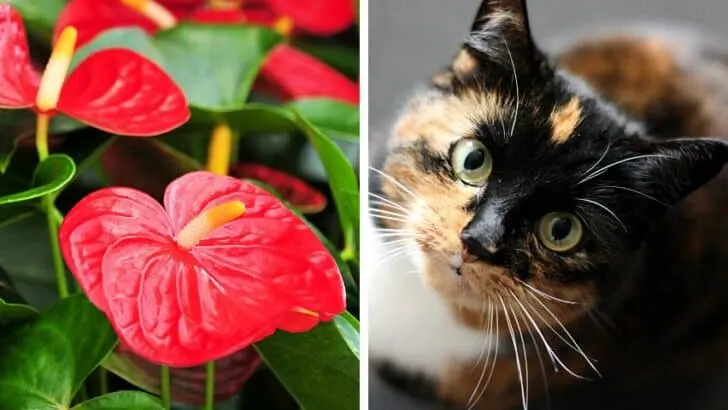Are Anthurium plants toxic to Cats? Many aroid plants from the Araceae family are toxic.
But what about Anthuriums? One of the most common Anthurium plants is the Flamingo flower or Anthurium andraeanum.
They also go by the names Pigtail plant, Oilcloth flower, Tail flower, and Painter’s palette.
Table of Contents
Is Anthurium Toxic to Cats?
Anthuriums are toxic to cats as well as other animals and humans. They contain calcium oxalate crystals. These are water-insoluble. The crystals lead to vomiting, diarrhea, and drooling when swallowed. Other effects are difficulty swallowing and breathing and skin and oral irritation. If your cat ingested parts of the plant, seek out a veterinarian.
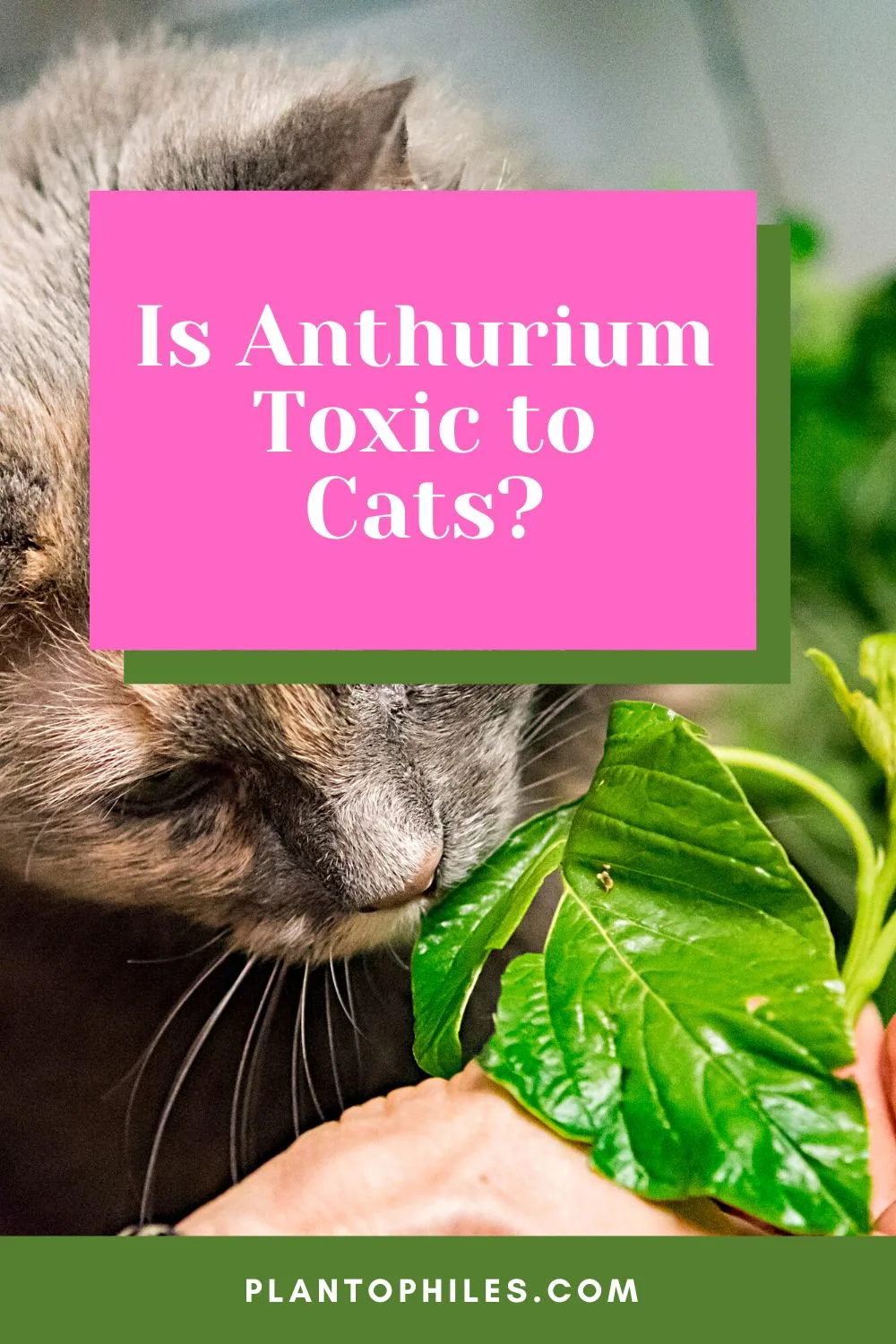
What Anthurium Plants are
Most Anthurium plants, such as the Flamingo lily, are epiphytes. Epiphytes grow on other plants and objects. They are either found on the ground or in plant crowns.
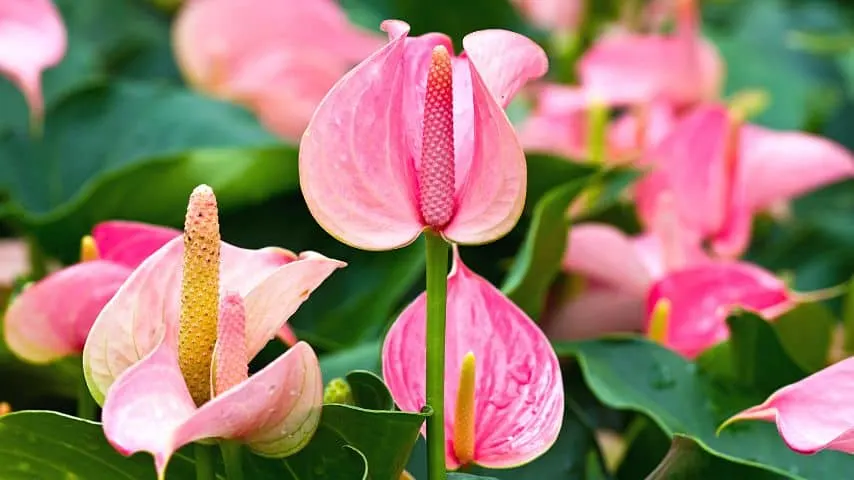
They need bright indirect sunlight and warm temperatures as well as high humidity. These plants need well-draining soil, or else the roots will suffocate. A common issue is root rot.
Anthuriums grow in South America and the Caribbean. They are slow to moderate growers at best. Some of the anthurium varieties can reach up to 3 feet tall (91cm), according to the University of Florida.
Most Common Types of Anthurium
Some of the most common types of Anthurium plants are:
Flamingo Flower (Anthurium andraeanum)
The Flamingo flower produces a red bract that is a modified leaf. It is often falsely identified as a flower. The flower itself consists of a spathe and spadix.
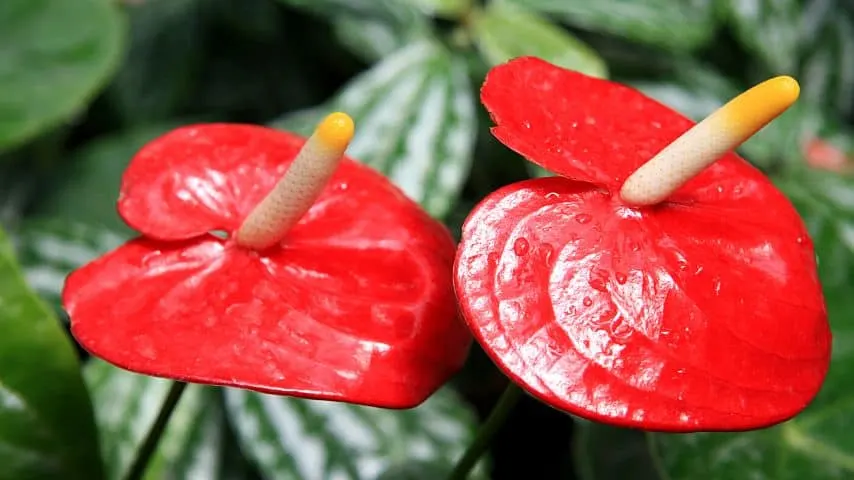
King Anthurium (Anthurium veitchii)
These plants produce large green foliage. The leaves are ruffled and look like abs.
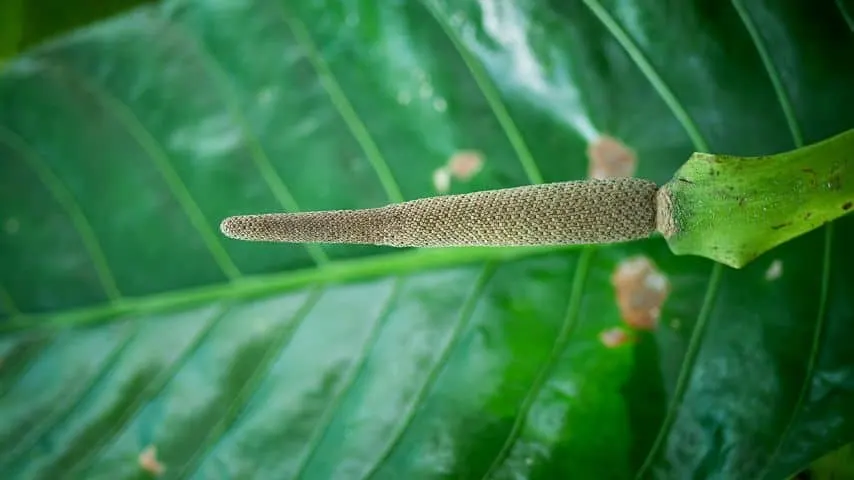
Queen Anthurium (Anthurium warocqueanum)
Queen anthuriums produce large pendent foliage and grow best in hanging planters.
Calcium Oxalate Crystals
Veteriankey states that Calcium Oxalates are common in houseplants. The calcium oxalate crystals are rarely soluble. More common are insoluble calcium oxalate crystals.
Soluble oxalates are sodium or potassium oxalates.
Fatalities are rare and are mostly connected to insoluble oxalates. The main reason is the obstruction of the airways caused by swelling and kidney failure.

Signs That Your Cat Ate A Toxic Plant
Common signs your cat ingested a toxic plant are:
- Change in appetite
- Change in activity
- Increased salivation
- Difficulty breathing
- Nausea
- Vomiting
- Diarrhea
- tremors
- ataxia
- drooling
- Seizures
- elevated heart rate
- increased respiratory rate
What To Do If a Cat Eats Anthurium
If you suspect your cat ate a toxic plant, it is important to act fast. The following steps should be followed:
- Identify the plant that has been ingested
- Remove the plant from the vicinity of the cat
- Observe the cat and register its behavior
- Contact a veterinarian
- Oral or topical treatment may follow
How to Create a Safe Environment for Cats
To create a safe space for cats, you should know what the cats need and want. Remove any dangerous and harmful objects and substances, including plants.
Modify the home layout and ensure all toxic plants are on high ground. Felines should not be able to reach them.
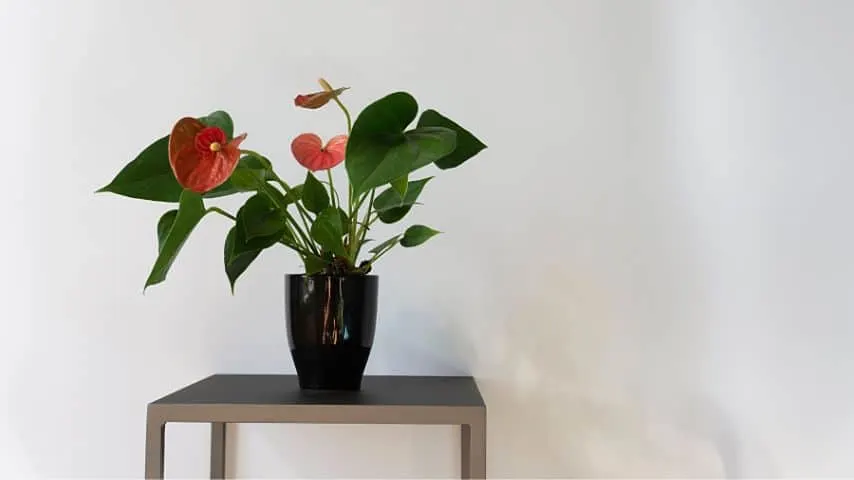
Ensure the environment is free from excessive noise. Most importantly, allow for spaces to play and hide. Make sure both food and water are readily available. Sanitary facilities are important as well.
How to Keep Pets Away from Anthurium Plants
To keep cats away from anthurium plants, use physical barriers. Raised beds and fences outside are a good choice.

Inside, you can work with placing plants in rooms the cats are not allowed in. Alternatively, put them on a high ground unreachable for cats. Enclosed containers, as well as terrariums and grow tents, are further options.
In addition, you can use repelling substances cats hate.
As a last resort, get rid of any toxic plant if keeping cats away from them is not an option.
Handling Anthurium Plants
Always wear gloves when you are working with Anthurium plants. Specifically if you are cutting, potting, or repotting them.
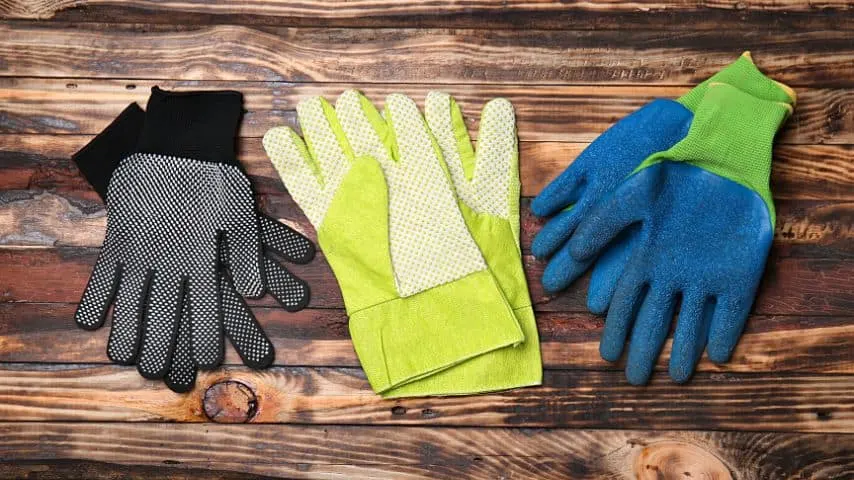
The plant sap can lead to skin irritation, and ingestion can have adverse health effects such as difficulty swallowing.
Cat-Safe Houseplants
The following houseplants are cat-safe:
- Spider Plant (Chlorophytum)
- African Daisy (Gerbera jamesonii)
- Aluminium Plant (Pilea cadierei)
- Bird’s nest fern (Asplenium nidus)
- Boston Fern (Nephrolepis exalta bostoniensis)
- Cushion Aloe (Haworthia retusa)
- Blue Hens and Chicks (Echeveria glauca)
- Nerve plant (Fittonia verschaffeltii)
- Flame African Violet (Episcia reptans)
- Friendship Plant (Pilea involucrata)
Read this article for a list of cat-save houseplants.
Why Anthurium is Toxic
Anthurium is toxic to cats because they contain calcium oxalates. These are water-insoluble crystals.
Any ingestion or even skin contact is sufficient to cause adverse effects. These poisonous plants have adverse effects on cats and dogs.
They are also toxic to humans. Further symptoms of anthurium toxicity are mouth pain, swelling of the throat, and irritation of the mouth.
How to Keep Pets Safe in the Garden
Keep toxic plants out of reach outside. This can be achieved by keeping plants in a safe location.
Cats should not be able to touch the plant. Shelves and other high places are ideal.
Use fencing and other physical obstructions outside.
Frequently Asked Questions about Anthurium Being Toxic to Cats
Is anthurium toxic to cats?
The flamingo plant, also known as the flamingo flower, is toxic to pets and humans. Keep your cat safe by placing the plants in high places.
Will anthurium kill cats?
If your cats ingest part of the flamingo flower, observe your plants. Anthuriums are toxic to cats. Cats and dogs can have adverse health effects caused by toxic oxalate crystals, such as oral irritation and swelling. Kidney failure is rare.
Are anthurium leaves poisonous to cats?
Anthurium leaves are toxic and can lead to oral irritation. For the most part, nibbling on the foliage causes mild to moderate symptoms.
Call the pet poison helpline if your cat ate parts of an anthurium plant.

Daniel has been a plant enthusiast for over 20 years. He owns hundreds of houseplants and prepares for the chili growing seasons yearly with great anticipation. His favorite plants are plant species in the Araceae family, such as Monstera, Philodendron, and Anthurium. He also loves gardening and is growing hot peppers, tomatoes, and many more vegetables.

